Watch the 500R8 Quick Tutorial below:
Hardware Inserts In Other DAWs:
Every DAW handles Hardware inserts differently. Many use dedicated plug-ins (such as Studio One, Logic Pro X) whereas others use hardware insert functionality that is configured centrally (Pro Tools, Cubase). Below are some instructions on how to achieve a similar explained in the video from your chosen DAW.
To insert outboard gear into your DAW session using Pro Tools, you will need to use the Hardware Insert functionality. This facility is located and configured within the Setup > I/O menu inside Pro Tools. Once configured, Pro Tools allows you to insert the hardware into the channel in the same way as a software plug-in. Pro Tools only allows inserts to be achieved using like-for-like numbered USB paths however 500R8's specific channel ordering makes this easy.
For a step by step guide on setting this up in Pro Tools, please follow the steps in the below SOS article:
https://www.soundonsound.com/techniques/pro-tools-integrating-outboard
To insert outboard gear into your DAW session using Studio One, you will need to use a specific plug-in called Pipeline XT. This Plug-in allows you to freely setup the Input and output paths of the insert's audio paths whilst also allowing you to add notes and pictures of the 500 series module's settings and are stored within the plug-in itself. Pipeline XT also has facilities for Wet-Dry as well as Input and output trims to enable the user to properly configure the I/O paths.
For a step by step guide on setting this up in Studio One, please follow the steps in the below SOS article:
https://www.soundonsound.com/techniques/pipeline-xt-integrating-outboard-studio-one
To insert outboard gear into your DAW session using Ableton, you will need to use the External Audio Effect facility. The input and output paths of this facility are patched and configured from with the DAW itself and allows the user to easily configure the I/O and wet/dry levels of the insert itself.
For a step by step guide on setting this up in Ableton, please follow the steps in the below Ableton help article:
https://help.ableton.com/hc/en-us/articles/360005113200-Using-external-audio-effects
To insert outboard gear into your DAW session using Cubase, you will need to use the VST connections menu. This menu allows you to create a hardware insert and configure its IO paths, label the insert, and then place them into your DAW session in the same way as software plug-ins.
For a step by step guide on setting this up in Cubase, please follow the steps in the below video by Cubase help article:
How to Set up and Use External Effect Processors in Cubase | Q&A with Greg Ondo
Receive the latest product updates directly from the team.


Cranborne Audio, Harvest House, Cranborne Rd, Potters Bar, EN6 3JF
Privacy Policy | Warranty Policy